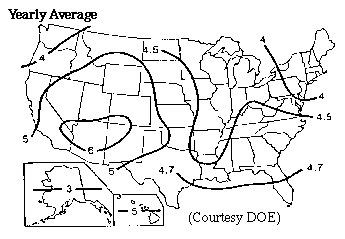You are implying he has only 4 some odd hours a day that his cell can generate electricity, which is a ridiculous idea, he lives in Tennessee, not Barrow Alaska.
http://www.bigfrogmountain.com/SunHoursPerDay.html

http://www.bigfrogmountain.com/SunHoursPerDay.html

Jerry, you should really learn more about the things you make comments about before you make them
You should follow your own advice
It would cost FAR less to just run power to the building than to build an elaborate solar system to turn any type of heaters
You should follow your own advice
It would cost FAR less to just run power to the building than to build an elaborate solar system to turn any type of heaters
Last edited:


